The Chennai Photo Biennale Foundation’s hunt for impactful images with meaningful stories is now in its fourth year. The latest edition of the CPB Photo Awards saw a significant increase in entries, with over 9,700 from 300 plus cities across India. The five-member jury — including names such as Daniella Zalcman, photojournalist and founder of Women Photograph, Senthil Kumaran, photographer and National Geographic explorer, and Dinesh Krishnan, photo editor of The Hindu — had a challenge on their hands to choose only 10 winners.
The awards were established in 2019 to recognise and celebrate excellence in photography, but also to emphasise the under-recognised work of regional talent. “While the earlier editions had a greater focus on documentary photography and reportage, photographers from other genres were not able to participate,” says Shuchi Kapoor, co-founder of CPB Foundation. “Inclusion is an important focus of ours and so the fourth edition introduced genres such as Daily Life, Culture and Street Photography, Portraiture. This has allowed photographers from different backgrounds to participate.”
The winners were announced on Thursday (April 4) at an awards ceremony hosted by The Leela Palace Chennai. Here are their works.
The awards are supported by Sidhant Khanna, Emami Art, Nazar Foundation, Shared Ecologies, The Leela Palace (hospitality partner), Ashvita’s, Ashok Leyland, and The Hindu (media partner).
Thulasi Kakkat, Kochi
Category: Danish Siddiqui Award for Socially Concerned Photography - Photo of the Year
Cash prize: ₹1 lakh
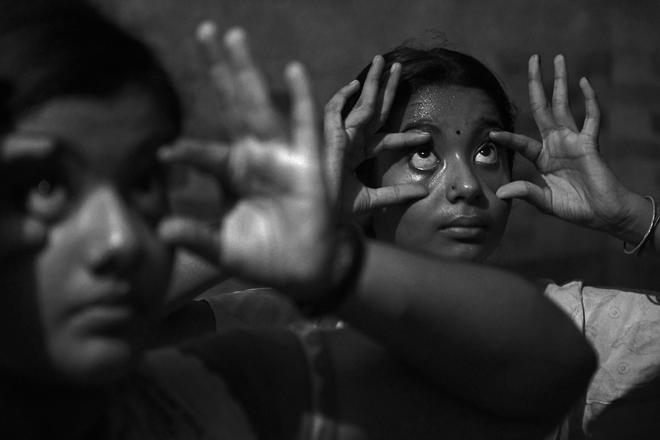
In this stark black-and-white capture, Kakkat — a photojournalist with The Hindu and winner of the Kerala Media Akademi Award in 2020 — focuses on Arya and Akshaya. Among the first batch of female students of Kathakali at Kerala Kalamandalam, an institution aimed at preserving the artistic heritage of the State, the two were shot in June practising Kannusadhakam (eye exercises) during their 5 a.m. sadhakam (training) in Thrissur. Their entry in 2021 signalled the end of Kalamandalam’s 90-year-old, male-only tradition
Vishal Bhatnagar, Jaipur
Category: News and Current Affairs - Single Image
Cash prize: ₹50,000
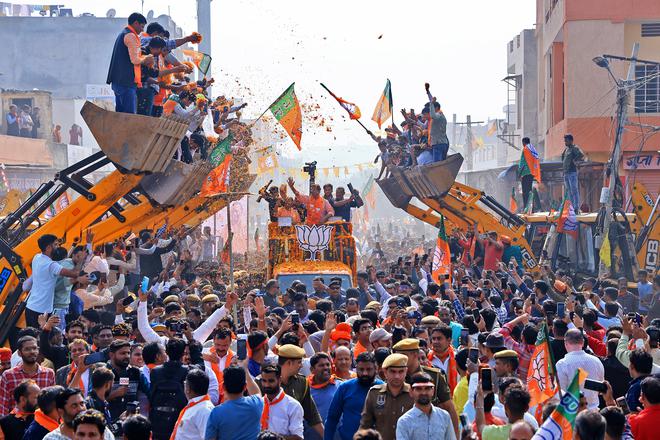
Ahead of the Rajasthan Assembly Elections last November, Bhatnagar captured the Uttar Pradesh chief minister participating in a roadshow atop a bulldozer — in support of BJP candidate Rajyavardhan Singh Rathore from the Jhotwara constituency. Yogi Adityanath may be credited as the ‘creator’ of the bulldozer as a tool for political messaging. “My main focus is editorial photography,” says the self-taught independent photojournalist, who also frames nature and current affairs. “I have a keen interest in capturing moments and understanding the stories behind the photos.”
Surender Solanki, New Delhi
Category: Climate, Environment and Conservation - Single Image
Cash prize: ₹50,000
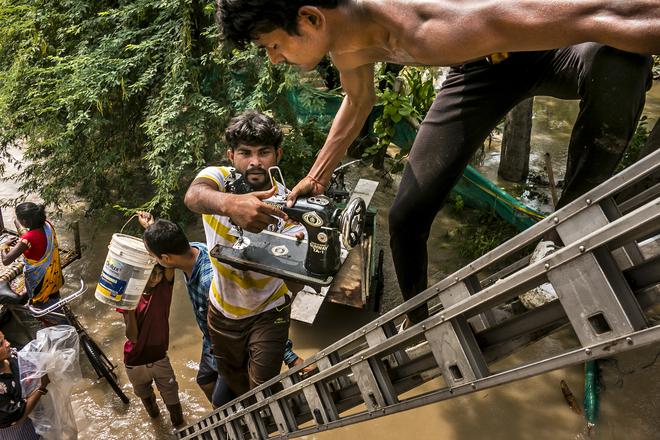
Last July, Solanki snapped this shot of Saini Nursery residents in Mayur Vihar bringing along their meagre possessions as they climb ladders onto an under construction overpass.
Many villages and farmlands were submerged after the Yamuna flooded due to heavy rainfall, and nearly 35,000 people evacuated their homes. The freelance photographer, who won the National Media Fellowship Award in 2014 for his photo documentary ‘River Yamuna and the Decay of its Culture’, is doing a systematic study on the origins of the Yamuna and its changing face — with a sharp focus on how the development along its banks impact the relationship between the people and the river. His other ongoing project is on the illegal sand mining industry on the river’s banks.
Joseph Rahul, Kochi
Category: Daily Life and Culture - Single Image
Cash prize: ₹50,000
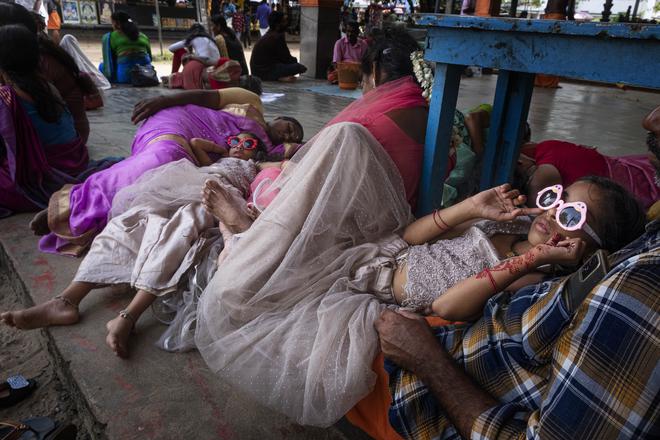
Rahul’s practice walks the fine line between documentary and street photography. Like this slice-of-life shot from last year, at the Ochira Parabrahma temple. The independent photographer caught devotees in an unguarded moment, resting during the temple festival. A pair of twins in their finery don sunnies as they relax against their sleeping parents. It’s a short moment of silence before the chendas (drums) start again.
Akilan Thyagarajan, Chennai
Category: Portrait - Single Image
Cash prize: ₹50,000
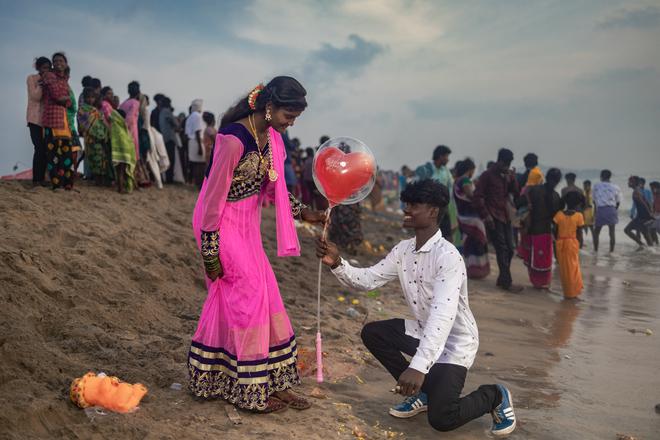
The IT professional with a “keen interest in photographing people and pets” caught this heartwarming moment between a newly-wed Irular couple last February during the Masi Magam festival in Mahabalipuram. “I love to travel across India and meet [different] people,” says Thyagarajan.
Nitin Jain, Pune
Category: Nature and Wildlife - Single Image
Cash prize: ₹50,000
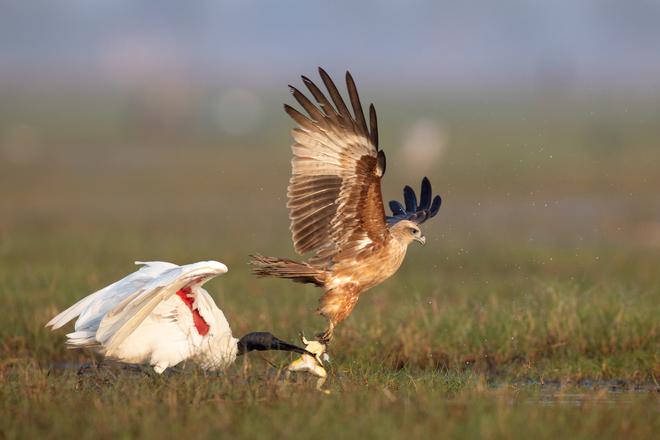
Jain, who loves to “shoot action in nature”, got his Canon camera out just as a Brahminy kite attempted to snatch a frog from the beak of a Black-headed Ibis in Chilika Lake, Asia’s largest brackish water lagoon in Odisha. “I captured the dramatic moment from a nearby boat,” says the fine arts graduate, adding that the juvenile kite successfully stole the kill.ed the dramatic moment from a nearby boat,” says the fine arts graduate, adding that the juvenile kite successfully stole the kill.

“We were spellbound when the open call closed and we realised that we had received almost 10 times the entries as compared to the previous editions! It is truly heartening to see photographers apply from non-metro cities as well, with important themes and moments. While the awards are being offered to 10 applicants across different categories, our efforts are to ensure that photographers from any background have the opportunity to apply without any financial constraints, and hopefully win.”Shuchi KapoorCo-founder of CPB Foundation
PHOTO STORIES
Anindito Mukherjee, Noida
Category: Photo Story of the Year
Cash prize: ₹1 lakh
Agriculture employs close to half of India’s working population, yet it generates less than a fifth of the country’s gross domestic product. The agricultural system that feeds India’s 1.4 billion people still relies on ill-equipped smallholders. And ironically, farmers often lack enough food and access to financing sources to buffer against shocks. Most turn to credit to manage expenses during the sowing season, but their heavy reliance on rain for irrigation means yields are often volatile — a gamble that’s only getting riskier as the planet warms. Farming can easily become a debt trap, and successive Indian governments have struggled to stem suicides among cultivators.
Mukherjee’s photo story captures vignettes from farmers’ lives. “I specialise in capturing compelling narratives within the realms of health, politics, economics, and development,” says the independent photojournalist and documentary photographer, who has worked with The New York Times, Getty Images, Bloomberg, and AFP. “Additionally, I undertake commissioned documentary projects that allow me to delve deep into diverse subjects.”
Chinky Shukla, Ghaziabad
Category: Emami Art Regional Photographer of the Year
Cash prize: ₹1 lakh
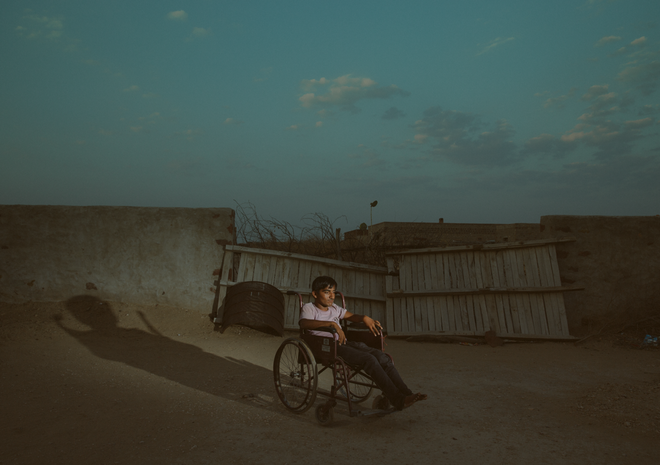

In the summer of 1998, India became a nuclear power. But in the loud rumble of earth, triggered by the explosions, a generation lost its voice. The desert dwellers of Khetolai, Loharki and Chacha villages are still paying the price. At first, the test caused deep cracks in their mud huts, burst their water tanks, and contaminated their ponds and farmland. Over two decades later, many cases of cancer, cerebral palsy, and intellectual disability are still being reported in villages near the site. “The officials are not ready to support us. They do not want to share the survey data with us,” says Nathu Ram Bishnoi, former village head of Khetolai.
The first atomic test, codenamed ‘Smiling Buddha’, was conducted in 1974. The second series of nuclear tests, in May 1998, was called ‘Operation Shakti’. Residents have been exposed to radiation since the first test. A recent study by Dr. Arjun Singh, former Joint Director of Medical and Health Services in the Jodhpur region, found traces of radiation in the soil, underground water and even the trees in the villages near the blast site.


Shukla began documenting the far-reaching consequences of nuclear radiation in India in 2011. Her ongoing photo project, supported by the National Geographic Society, documents the region of Pokhran in Rajasthan. Through the project, she aims to bring attention to the lived experiences of individuals and communities impacted by the tests, shedding light on their struggles, resilience, and the broader social dynamics at play.
Stephen Luwang, Manipur
Category: News and Current Affairs - Photo Story
Cash prize: ₹50,000
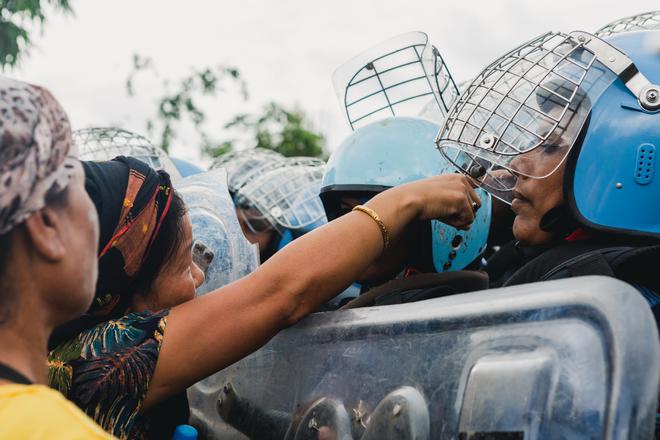
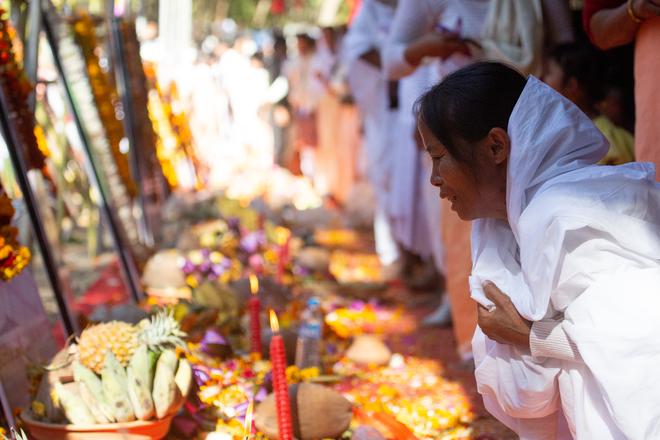
Last May, violence broke out in Manipur between the Meiteis and the Kukis. More than 180 people were killed and 50,000 people left displaced. Temples and churches were vandalised because of the conflict.
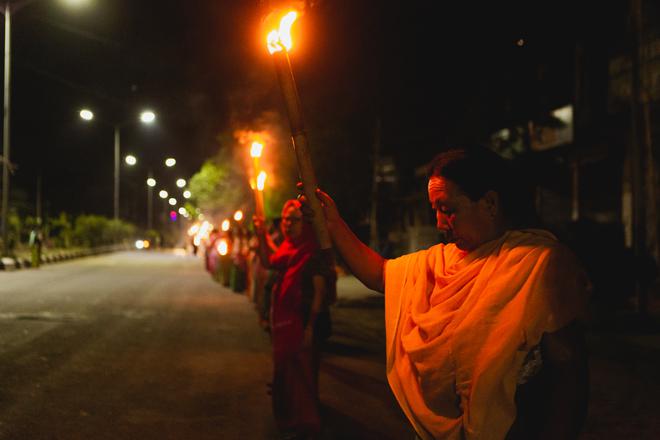
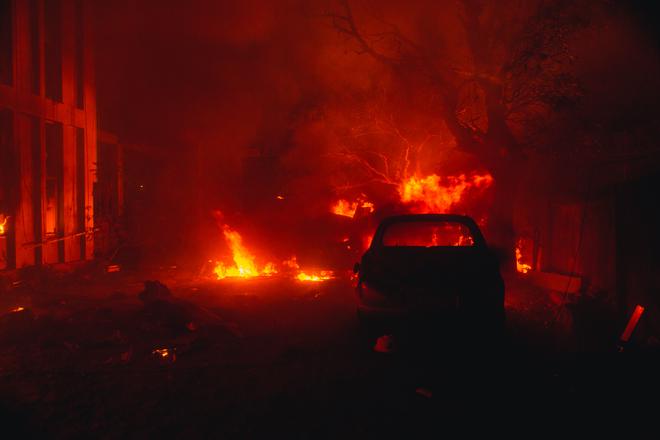
The photojournalist, interning at the Imphal Free Press, was in the thick of it. “This work shows the harsh reality of the ongoing conflict, where one could get killed for being born into a particular community,” says Luwang.
Harsha Vadlamani, Hyderabad
Category: Climate, Environment and Conservation - Photo Story
Cash prize: ₹50,000
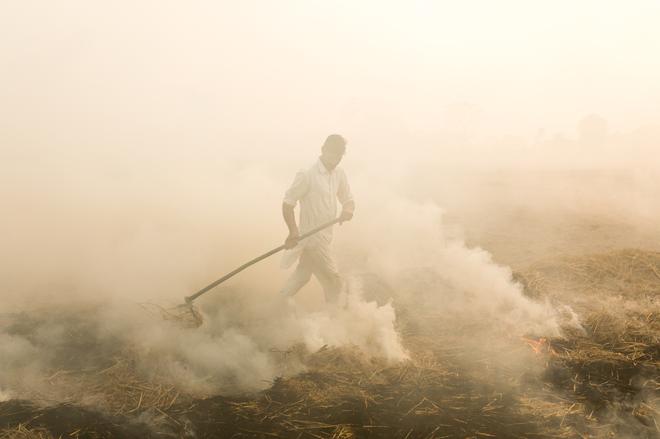
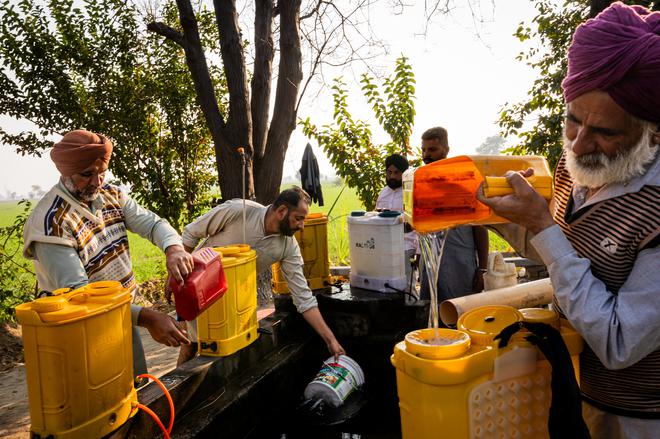
India launched the ambitious Green Revolution programme in the 1960s to boost food production. One of its focus areas was Punjab — the land of five rivers — where farmers were encouraged to grow hybrid varieties of crops with the generous use of fertilizers and pesticides. To water the crops, they relied on tubewells, whose numbers increased from 7,445 in 1961 to 1.5 million in 2021.
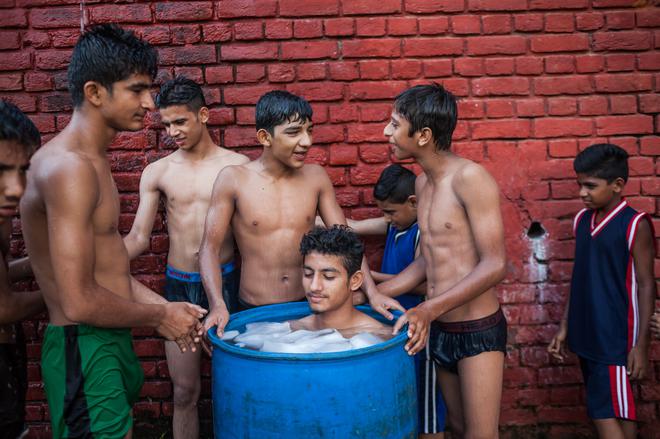
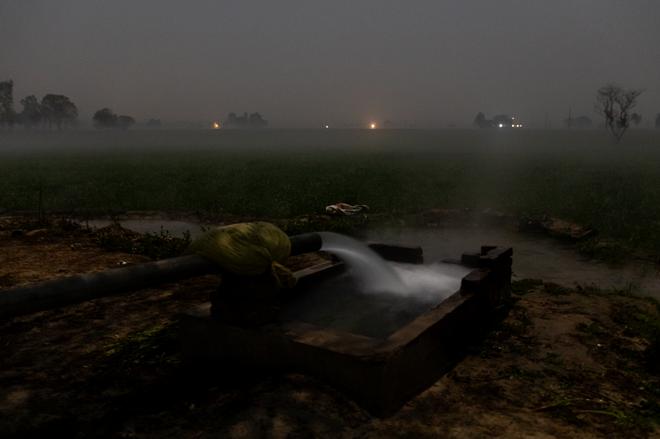
Six decades later, water levels across the State have plummeted and continue to fall at an average of 0.49 metres per year. “My photography project explores how groundwater depletion and erratic rainfall due to climate change impact food production, and push farmers further into debt,” says the independent photojournalist, filmmaker and National Geographic Explorer, based between Hyderabad and Bengaluru. “Multiple studies have now established that the indiscriminate use of fertilizers and pesticides has led to the contamination of groundwater, leading to a rise in cases of hepatitis, renal diseases and cancers. The project also looks at how increased medical expenses are contributing to farm debt and suicides.”
Vadlamani, who quit an IT job to pursue photography in 2008, has had his work published in the National Geographic, The New York Times, The Wall Street Journal, Nature, BBC and more.







